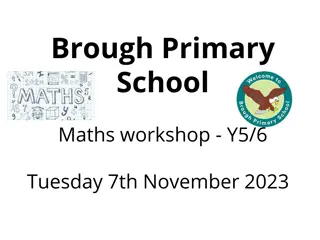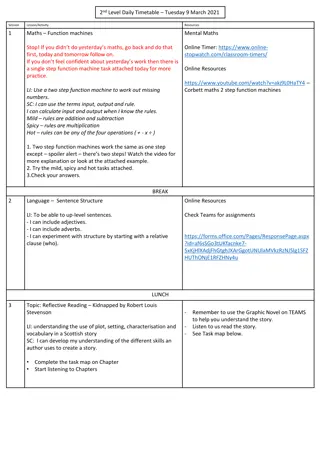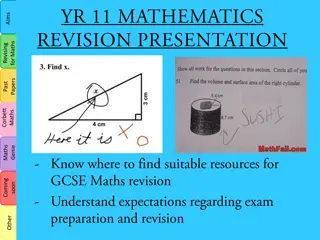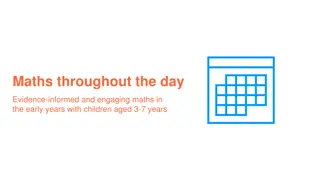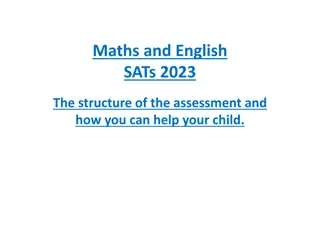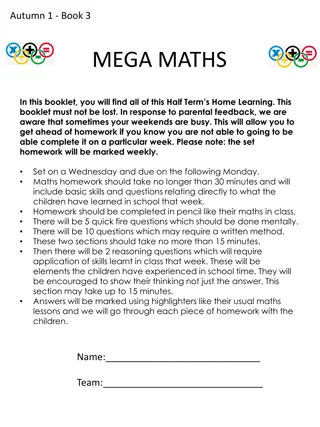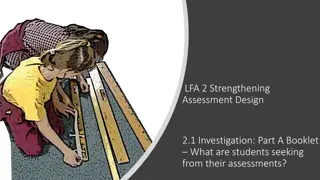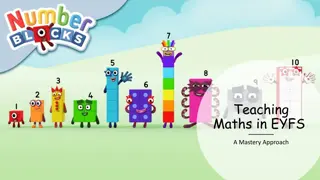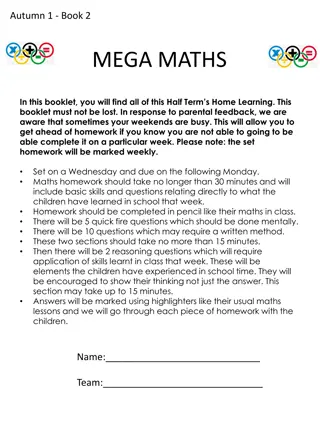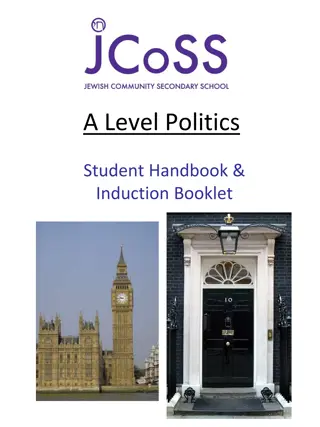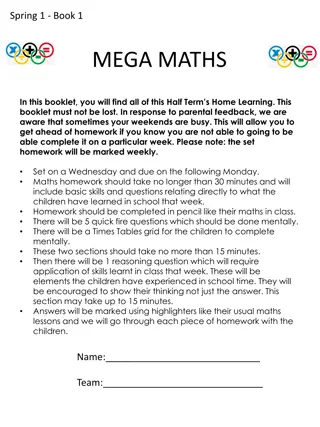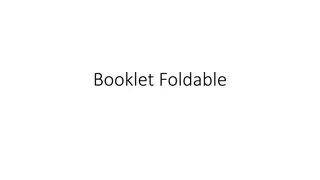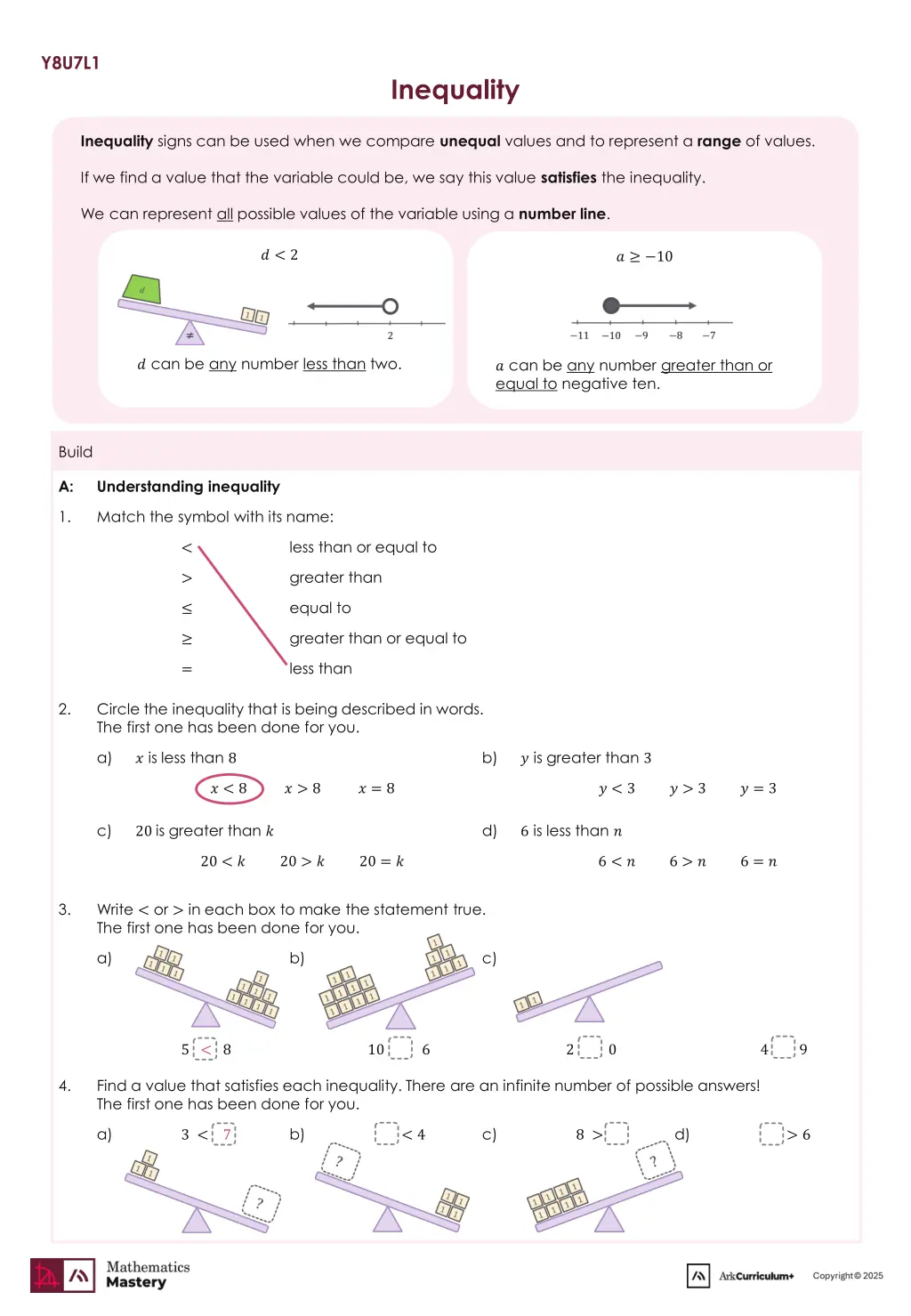
Understanding Inequalities: Symbols, Visual Representation, and Practice
Learn how to interpret inequality symbols, represent them on number lines, find values that satisfy inequalities, and more through engaging exercises and visual aids. From understanding symbols to mastering representing inequalities, this comprehensive guide will enhance your math skills.
Download Presentation

Please find below an Image/Link to download the presentation.
The content on the website is provided AS IS for your information and personal use only. It may not be sold, licensed, or shared on other websites without obtaining consent from the author. If you encounter any issues during the download, it is possible that the publisher has removed the file from their server.
You are allowed to download the files provided on this website for personal or commercial use, subject to the condition that they are used lawfully. All files are the property of their respective owners.
The content on the website is provided AS IS for your information and personal use only. It may not be sold, licensed, or shared on other websites without obtaining consent from the author.
E N D
Presentation Transcript
Y8U7L1 Inequality Inequality signs can be used when we compare unequal values and to represent a range of values. If we find a value that the variable could be, we say this value satisfies the inequality. We can represent all possible values of the variable using a number line. ? < 2 ? 10 ? can be any number less than two. ? can be any number greater than or equal to negative ten. Build A: Understanding inequality 1. Match the symbol with its name: less than or equal to < greater than > equal to greater than or equal to less than = 2. Circle the inequality that is being described in words. The first one has been done for you. a) ? is less than 8 b) ? is greater than 3 ? < 8 ? > 8 ? = 8 ? < 3 ? > 3 ? = 3 c) 20 is greater than ? d) 6 is less than ? 20 < ? 20 > ? 20 = ? 6 < ? 6 > ? 6 = ? 3. Write < or > in each box to make the statement true. The first one has been done for you. a) b) c) 5 < 8 10 6 2 0 4 9 4. Find a value that satisfies each inequality. There are an infinite number of possible answers! The first one has been done for you. a) b) c) d) >6 3 < 7 < 4 8 >
5. Circle the inequality each see-saw represents. a) b) c) 3 < ? 10 > ?2 > ?2 < ? 3 > ? 10 < ? B: Representing inequalities on number lines 6. Circle the inequality that is represented on the number line. The first one has been done for you. a) b) ? < 2 ? > 2 ? < 3 ? > 3 c) d) ? < 8 ? 2 ? > 8 ? 2 e) f) ? < 10 ? 10 ? < 7 ? > 7 ? 7 ? 7 7. Match the number line to the description in words. The first one has been done for you. ? is less than six ? is greater than or equal to six ? is less than or equal to five ? is greater than five Practise A: Finding values that satisfy inequalities 8. Write two equivalent inequalities that represent each statement. The first one has been done for you. a) ? is greater than four ? > 4, or 4 < ? b) ? is less than eight c) Two is less than ? d) Six is more than ? e) ? is greater than ten plus one f) ? is less than negative seven g) Negative five plus three is greater than ? h) ? is a negative number i) ? is a positive number
9. For each inequality, circle any possible values for the variable. The first one has been done for you. a) b) ? > 4 ? < 3 5, 1, 0, 3, 8, 13 5, 1, 0, 3, 8, 13 c) d) 2 < ? 1 > ? 3, 0, 1.5, 2, 2.5, 4 3, 0, 1.5, 2, 2.5, 4 e) f) 3 + 4 > ? ? > 3 8 3 4, 3 4, 10, 4.6, 6.9, 9 10, 4.6, 6.9, 9 10. Cala is thinking of a number. My number is greater than negative five. a) Find two possible values for Cala s number. b) Find two impossible values for Cala s number. c) Could Cala s number be 5.0001? Explain your answer. B: Representing inequalities on number lines 11. Circle the inequality that is represented by each number line. The first one has been done for you. a) b) ? < 1, ? > 1, ? 1, ? 1 ? < 0, ? > 0, ? 0, ? 0 c) d) ? < 6, ? > 6, ? 6, ? 6 ? < 7, ? > 7, ? 7, ? 7 12. Represent each inequality on a number line. The first one has been done for you. a) b) ? 4 ? < 0 c) d) ? 1 ? > 2 e) f) 8 > ? 3.5 ?
13. Fill in the gaps to complete the sentences for each inequality. The first one has been done for you. a) b) ? 20 ? 3 ? can be any value less than or equal to 20. ?can be any value ? could be 20, or 3, or 9. ? could be , or , or . ? could not be 30, or 20.5. ? could not be , or . c) d) ? 2 ? ?can be any value ?can be any value ? could be , or , or . ? could be , or , or . ? could not be , or . ? could not be , or . e) f) ? ? ?can be any value ?can be any value ? could be , or , or . ? could be , or , or . ? could not be , or . ? could not be , or . 14. Declan and Phil are thinking about the inequality represented by this number line: The smallest value that satisfies this inequality is 9. Any number smaller than 9 satisfies this inequality. Who do you agree with? Explain your answer.
Extend 15. Circle the values which satisfy each inequality. a) b) 1 2, 7 80, 86.9, 87, 87.001, 90 0, 50, 0.01, 3 c) d) 6 8, 3 15 6, 1.4, 0.76, 33.5, 10, 2.5, 499, 3 5 16. For the inequality 1 > ?, decide whether each statement is true or false. a) ? could be 1 b) ? is at most 2 c) ? cannot be 0.9999 d) ? is a negative number e) ? + 1 is a positive number f) 2? could be 3 17. Zaki and Binh have just completed a race. I finished in 49 seconds. I was faster than Zaki. a) Write an inequality to represent how long it took Binh to finish the race b) What is Binh s slowest possible finish time? 18. The lengths ?, ? and ? are shown on this grid: ? > ? ? ? Write an inequality involving ?, ?, and ? to show ? > ? which shape in each pair has the longest perimeter. The first one has been done for you. ? a) b) c) 4? > 4? I know this because ? > ? d) Draw a shape that has a longer perimeter than the shapes in part a, but a shorter perimeter than the shapes in c. Explain how you know.


